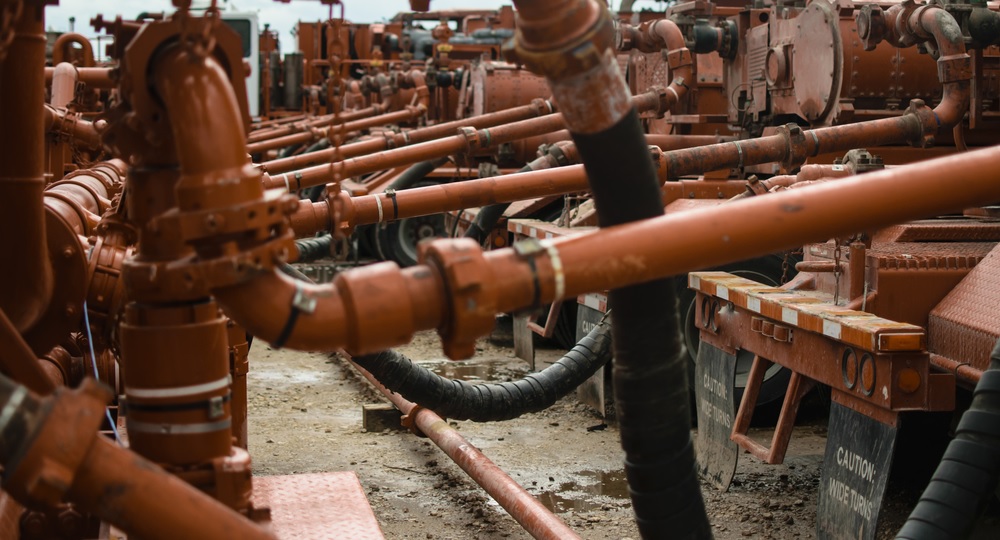Although a government-commissioned scientific review of fracking in British Columbia released earlier this month occupies some 232 pages, the word “concerns,” as in “concerns regarding environmental impact,” pops up more than 130 times.
That’s a lot of scientific apprehension about a technology that serves as the foundation for the province’s growing liquefied natural gas industry.
More than 90 per cent of all oil and gas wells in B.C. require extensive fracking, which pulverizes hydrocarbon-bearing rock with highly pressurized streams of water, sand and chemicals.
In its final report, the three-member scientific panel tasked with the review expressed “concerns” about every part of its limited investigation, particularly around water, seismic hazards and gas migration.
(It’s worth noting the review did not look at public health issues, cumulative land impacts, social costs, or the industry’s poor economic health or worker safety.)
The paucity of the data the researchers drew upon, perhaps, explains the proliferation of so many “concerns” in the review.
The word insufficient, as in “insufficient information,” peppers the report 27 times, while “unknown” appears 17 times.
Uncertain or uncertainty, as in “uncertain water quality,” appears nearly 50 times, while gaps, as in “important knowledge gaps,” litters the document 27 times.
Here’s a brief snapshot of eight “insufficient” and “unknown” data gaps the government of B.C., a proponent of LNG terminals, still faces regarding the impacts of the fracking industry on water, earthquakes and gas migration.
1. The government knows little about the state of groundwater in the northeastern B.C., or how fracked wells or wastewater disposal wells may impact that critical resource over time. The province operates just seven groundwater observation wells for a vast area.
The review noted, “In [northeastern B.C.], there is a general lack of information on groundwater, particularly the extent and thickness of aquifers, because there are very few groundwater well records that can be used to map aquifers with any degree of confidence.”
2. The report couldn’t draw conclusions about risks the industry poses to water, land and health because of insufficient data. “The very rapid development of shale gas in [northeastern B.C.] has made it difficult to assure that risks are being adequately managed at every step. Furthermore, the panel could not quantify risk because there are too few data to assess risk.”
3. The report couldn’t tell if the industry-funded B.C. Oil and Gas Commission was a competent regulator because, after a decade of overseeing a fracking boom in northeastern B.C., “insufficient evidence was provided to the panel to assess the degree of compliance and enforcement of regulations.”
4. The government knows little about radioactive hazards associated with fracking. Shale deposits containing oil or gas are deep and often contain salty waters contaminated with uranium, thorium and radium. The industry calls these radioactive elements “Normally Occurring Radioactive Material (NORM).” Fracking has changed the concentration and volume of NORM being produced at wellsites across North America.
“The issue of NORM throughout wastewater cycle (storage facilities, pipes, solid waste) needs careful examination by government to determine if current practices are sufficient for protecting human health and the environment,” reads the report.
5. The fracking industry consumes rivers and lakes of water, yet data on water quantity is insufficient or unknown. Even the panel noted that the data it cited in the report on water consumption by the industry was “outdated.”
“Considering the vastness of the region, alongside the increased level of industrial development, the panel considers the baseline data and the ongoing monitoring of surface water and groundwater quantity to be insufficient.
“Baseline data and information on streamflow, lake levels, and wetlands are sorely lacking, particularly given the high demand for surface water for industrial use.”
A B.C. Oil and Gas Commission technical expert told the panel, “There are a lot of data shortages, especially in smaller basins, and industry is interested in these smaller basins.”
6. There are serious questions about the region’s geological capacity to accommodate more disposal wells should LNG ramp up. Every year the fracking industry generates millions of barrels of toxic salty wastewater from shale formations. The law requires that industry re-inject these so-called “produced waters” back into the ground into designated disposal wells.
Pumping waste into 100 designated disposal wells over time has caused earthquakes and forced the closure of seven disposal wells. Disposal wells remain a constant threat to groundwater too.
The scientific panel learned that “if LNG ramps up again, [there would be] more pressure on these disposal wells. From a technical perspective, there are limits on pressure and flow due to potential seismic influences, and there are also potential impacts to neighbouring oil and gas wells and other disposal wells.”
The report added that “significant concern was expressed by government staff, the regulator and industry about insufficient capacity for wastewater disposal in [northeastern B.C.], because “there is no solid understanding of the volume needed and disposal requirements in the Montney for growth scenarios.”
7. The report raised multiple concerns about the thousands of earthquakes caused by hydraulic fracturing and wastewater disposal wells in northeastern B.C. It noted that cumulative injection volumes had played a role in generating earthquakes in areas with “dense hydraulic fracturing operations.”
The panel found that “the maximum magnitude of an event that could be induced in [northeastern B.C.] is unknown” and that “evaluating the success of a mitigation technique is difficult, given the industry’s current inability to forecast what would have happened without mitigation.” Given all the unknowns, the panel recommended more and better seismic monitoring in the region.
8. The B.C. government doesn’t have good data on the number of methane leaks from oil and gas wells, or the volume of fugitive methane being released by the industry. Methane, a greenhouse gas, is a much more potent destabilizer of the climate than carbon dioxide.
The panel recommended that industry data on surface casing leaks within the wellbore “be made publicly available, including both detected/measured leaks and monitoring and mitigation measures taken. In several cases, it was communicated to the panel that known leaks were being allowed to persist and that they would be dealt with at the time of well abandonment.”
On leaks outside the wellbore, known as “gas migration,” the panel reported that it “was acknowledged by both industry and non-industry presenters that there is a need for a better sense of occurrences and incident rates.”
In conclusion, the panel noted “an overall lack of transparency of data and information.”
As cement in wellbores ages, it cracks creating pathways for methane and other gases such as radium to find a way to the surface. The report noted, “experiences with the long-term integrity of wellbores is limited and represents a major knowledge gap.”
The report, which has stated nothing new about the industry and offers no concrete data on water consumption or waste water volume, failed to address a number of other critical issues, such as diminishing returns.
Fracking deep shale rock requires more capital, water and energy to retrieve fewer hydrocarbons than conventional drilling.
In most shale basins, companies only recover 12 to 18 per cent of the resource, even though they are using massive volumes of sand and water to attack the rock.
In contrast, the drilling of conventional resources often recover as much as 30 to 40 per cent of the resource. ![]()
Read more: Energy, Environment

















Tyee Commenting Guidelines
Comments that violate guidelines risk being deleted, and violations may result in a temporary or permanent user ban. Maintain the spirit of good conversation to stay in the discussion.
*Please note The Tyee is not a forum for spreading misinformation about COVID-19, denying its existence or minimizing its risk to public health.
Do:
Do not: